Virgin is spending $17 billion on new planes and cabins. See inside its Airbus A330neo, with niche perks like Bluetooth.

- Virgin Atlantic Airways has modernized its fleet with Airbus A350-1000s and Airbus A330-900neos.
- The planes replace aging widebodies and come with upgraded business and economy cabins.
Virgin Atlantic Airways has spent $17 billion to modernize its fleet and better compete with other airlines across the Atlantic.
With 40 years of history behind it, the UK-based carrier has seemingly found the sweet spot for long-haul travel.
Its new next-generation widebodies boast thoughtful premium economy and coach seats, while its business-class cabin is a night-and-day difference from the original version — particularly with the adoption of sliding doors and a set of increasingly trendy "business-class-plus" seats.
Virgin didn't equip its latest cabins with the bar seen on older Airbus A330-300s and Boeing 787s, but it has installed special social spaces for its highest-paying customers that put it on par with five-star competitors like Qatar Airways and Emirates.
Business Insider toured a Virgin A330-900neo, which hosts its latest cabin upgrade, at the Farnborough International Airshow in July. It's easily one of the best products flying across the Atlantic.
Virgin plans to fly 19 A330neos by 2028.
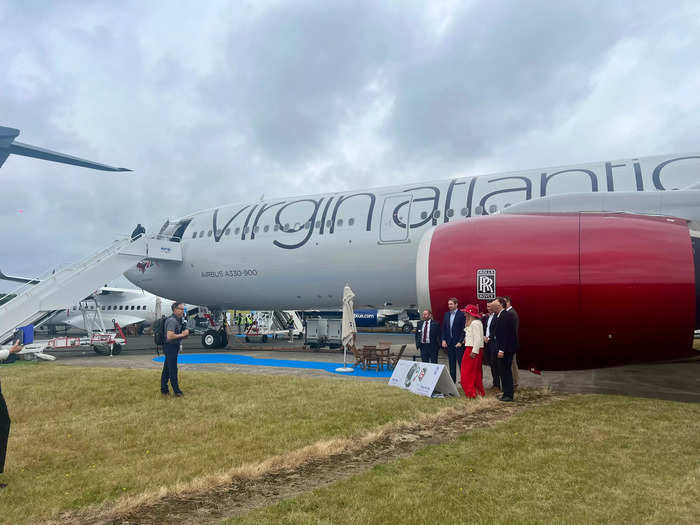
Virgin's old A330-300 fleet, which has an average age of about 13 years, is being replaced by the more fuel-efficient A330neo. The airline ordered seven more in July, rounding out its multibillion-dollar fleet transformation plan.
Virgin expects its fleet to grow to 45 planes, with an average age of just 6.4 years, over the next four years. This includes 19 A330neos, 12 A350-1000s, and 14 Boeing 787-9s.
The A330neo complements Virgin's similarly designed A350s, which it has acquired 12 of since 2019. BI flew on Virgin's A350-1000 in economy from New York to London in July and found it a better long-haul option than rival British Airways, thanks to its nice coach amenities and good food.
The star of the show is the A330neo-exclusive 'Retreat Suite.'
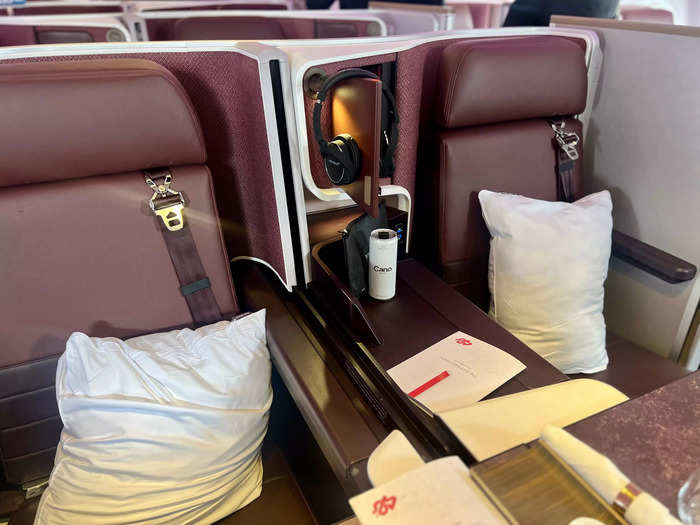
The two special suites take up center section seats 1D and 1G of the first row of the Upper-Class cabin.
The side-by-side seats are situated slightly differently, with the right-side one (1D) having extra storage space in the middle divider. The left-side seat (1G) has only one bin but more floor space.
Up to four people can share the oversized seat.
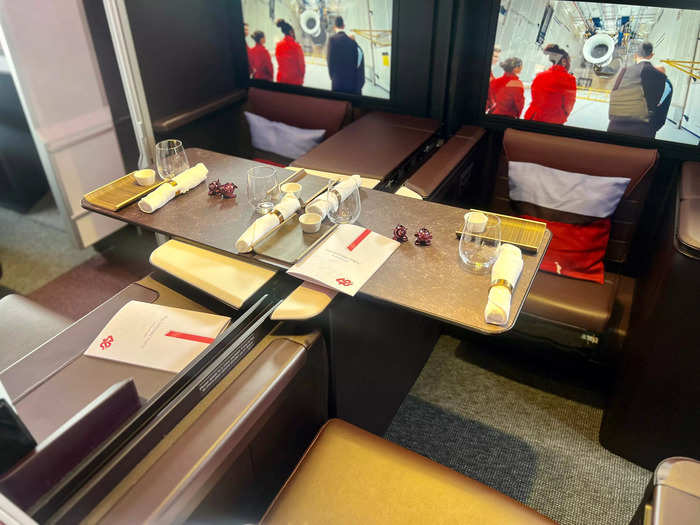
Thanks to the extra space created by the front-row bulkhead, each Retreat Suite passenger can host another traveler in the ottoman that doubles as part of the lie-flat bed and as a companion seat.
This means four people could socialize, meet, or dine together in one space.
The Retreat Suite is unavailable by the windows, which could be a dealbreaker for some customers.
Virgin offers the suite as an upcharge to widen its profits.
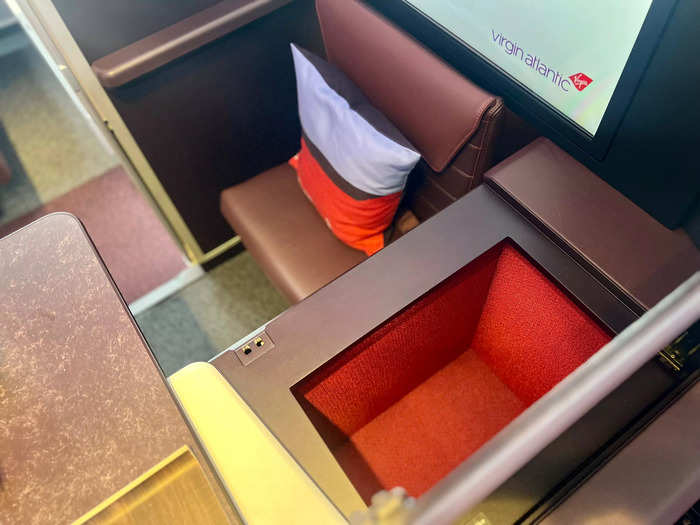
Upper-class passengers who want the Retreat Suite must pay an extra £300 per seat one-way (about $385). The upgrade window opens 14 days before departure, and it's first-come, first-serve.
This strategy is part of the growing "business-class-plus" trend adopted by carriers like JetBlue Airways and German carriers Condor and Lufthansa.
Airlines are now better at using the historically unused space at the front of the plane to create and market an elevated business class seat and charge a fee.
Some carriers, like Air France and Singapore Airlines, have a differentiated first row but don't monetize it. Instead, they reserve it for eligible loyalty flyers but randomly distribute it otherwise.
The A330neo Upper Class largely maintains the A350 design.
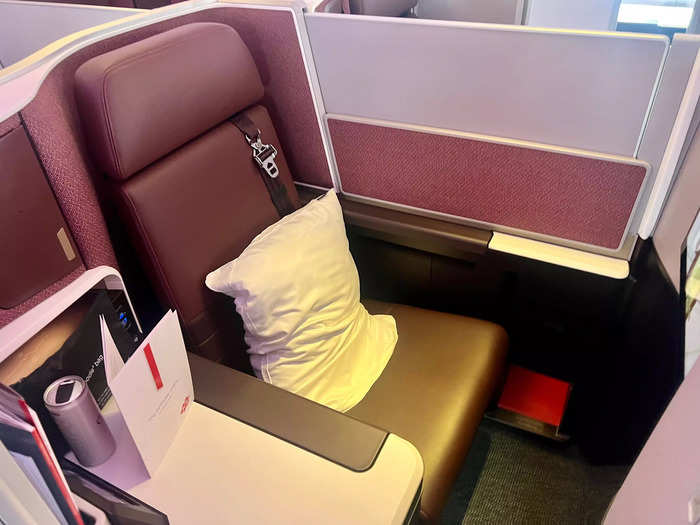
The A350 debuted with a new Upper-Class suite that was a stark improvement from the mediocre version on Virgin's A330-300s and Boeing 787s.
Virgin's old business class has an awkward setup: the seats face away from the window and don't have sliding doors. Its 1×1×1 layout mirrors the dated business class on Air New Zealand, which BI flew in 2022 but thought left much to be desired.
The A330neo's new generation Upper Class is a major step up — so much so that it ranked 11th in Skytrax's 2024 world's best airline business class list.
Sliding doors create pod-like seats that are on-trend with the industry.
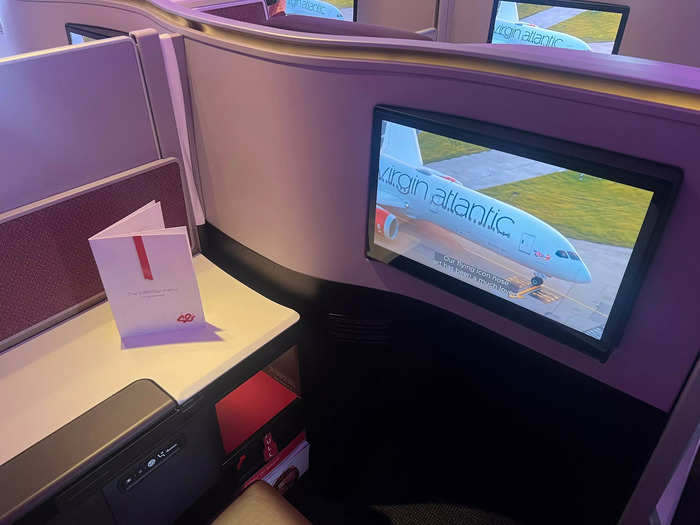
Airlines worldwide have seen a shift in customer expectations in business class, prompting the addition of sliding doors. Air India, British Airways, Delta Air Lines, Korean Air, and Turkish Airlines are among the carriers that have adopted the high-demand perk.
It's particuarly nice to see a fully closing door on Virgin's latest Upper-Class cabin since the A350 version that launched a few years earlier has one that only closes halfway.
The A350 design is particuarly unfortunate since British Airways' new Club Suite business class sports full privacy doors — but Virgin is clearly trying to make up for it on its A330neo, and its added bonus perks like Bluetooth, personal in-seat mood lighting, and wireless charging.
Customers have access to the 'Loft.'
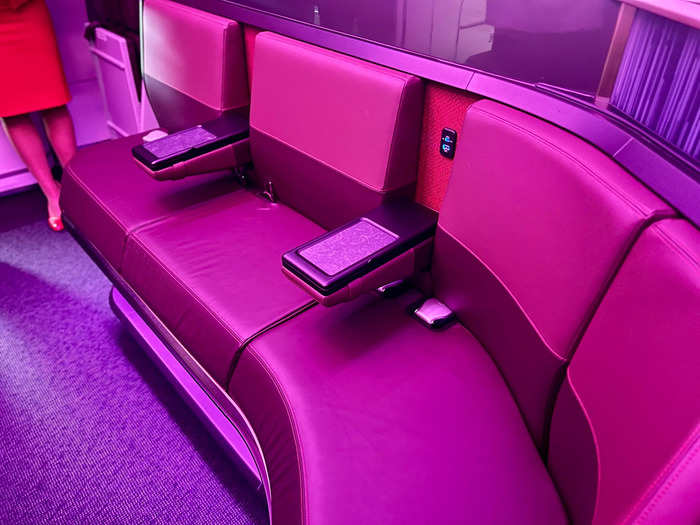
The Loft debuted on the A330neo and is a social space tucked between the Upper Class and premium economy cabins. The Loft, stocked with self-serve drinks and snacks, can accommodate up to eight people and is good for travelers who want to stretch their legs or socialize.
The lounge and its sister product, the "Booth," are also available on select A350s. However, neither jet sports the onboard bar available on the previous-generation A330s and the 787s.
Virgin's Upper Class boasts the typical long-haul business perks.

The 30 upper-class seats are configured in a 1×2×1 layout and have a middle divider between each set of center-section seats.
Customers can enjoy direct-aisle access, a six-foot and four-inch lie-flat bed, an amenity kit stocked with toiletries and sleepwear, a 17.3-inch seatback television with an accompanying remote, a mirror, more storage space than previous upper-class versions, and a menu of premium meals.
Travelers can also enjoy airport perks like lounge access and priority check-in and boarding with a business-class ticket.
Between business and coach is premium economy.
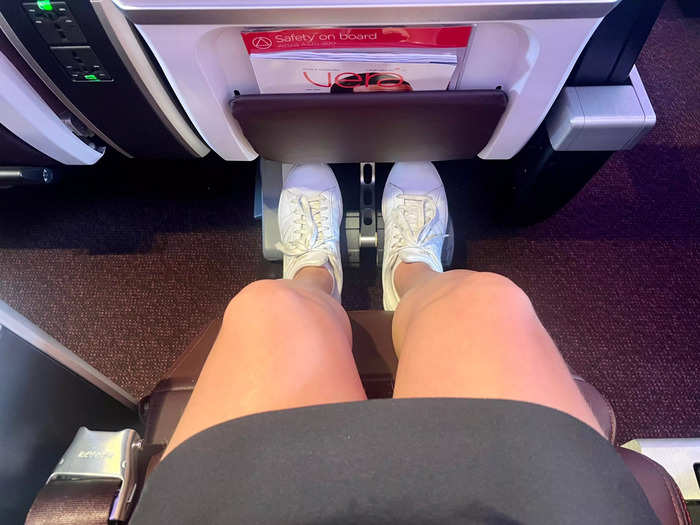
Virgin helped pioneer premium economy as an independent cabin decades ago and continues to offer it on board its widebody planes.
The A330neo 46-seater premium economy section boasts 38 inches of pitch and 18.5 inches of width and includes the industry-standard legrest and footrest for added comfort. It also has wireless charging.
The rows are split between 2×4×2 and 2×3×2 configurations, meaning some premium economy passengers will still get the middle seat.
The Bluetooth capability is less common in the airline industry.
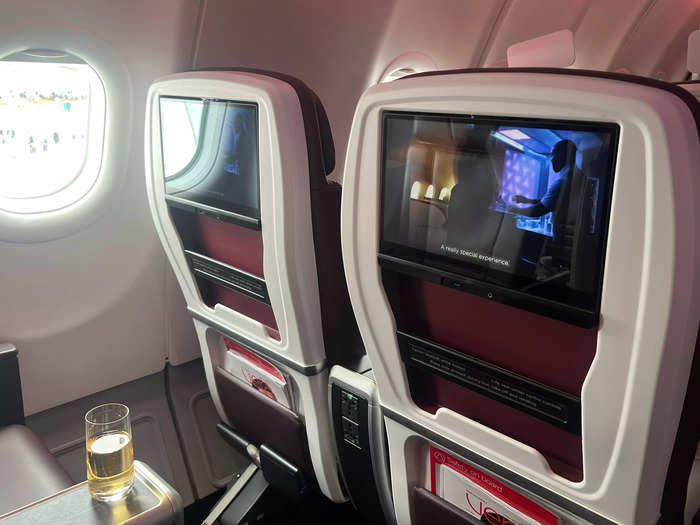
Bluetooth isn't just reserved for business class. The A330neo has Bluetooth-enabled 13.3-inch televisions in premium economy — and in regular coach.
Some other international airlines equip their planes with Bluetooth. Emirates offers the wireless perk in premium economy on select aircraft, while Cathay Pacific Airways is retrofitting it onto its Boeing 777-300ER planes.
Customers will find Bluetooth on only a few US carriers, like United Airlines and Delta Air Lines — and that's only on select narrowbody planes in each respective fleet.
Premium-economy customers get elevated meals and amenities.
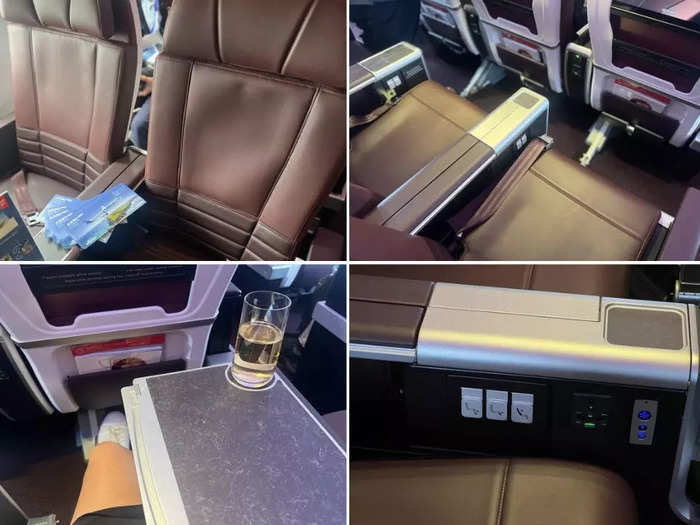
The premium economy boasts nicer cutlery and food than the regular coach cabin. Passengers can also enjoy a pre-flight drink, USB-A and C ports, plusher linens, and better headphones.
According to NerdWallet, customers also get more baggage allowance and expedited airport service.
Economy is Virgin's cheapest cabin.
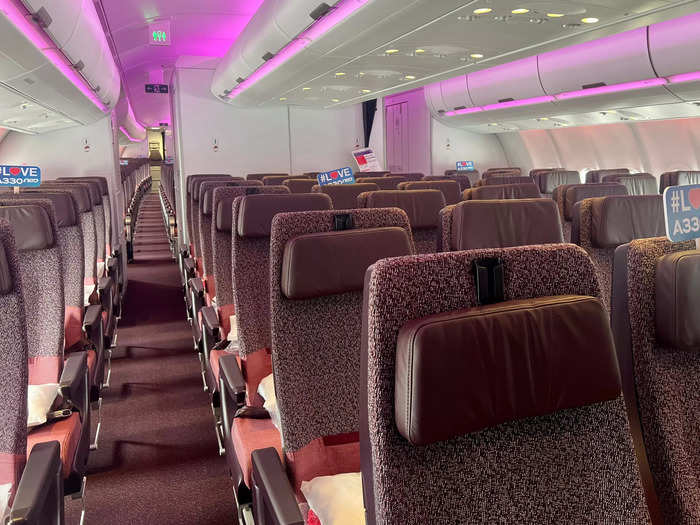
Virgin's 2×4×2 economy section (the most aft rows are 2×3×2) is divided into various fare categories, allowing customers to bundle their tickets as they wish.
Among the add-ons is "Economy Delight," a section of 28 extra legroom seats, each boasting 34 inches of pitch. The 156 Economy Classic offers the standard 31 inches of pitch, while both options offer 17.9 inches of width.
Coach boasts 13.3-inch seatback screens with Bluetooth.
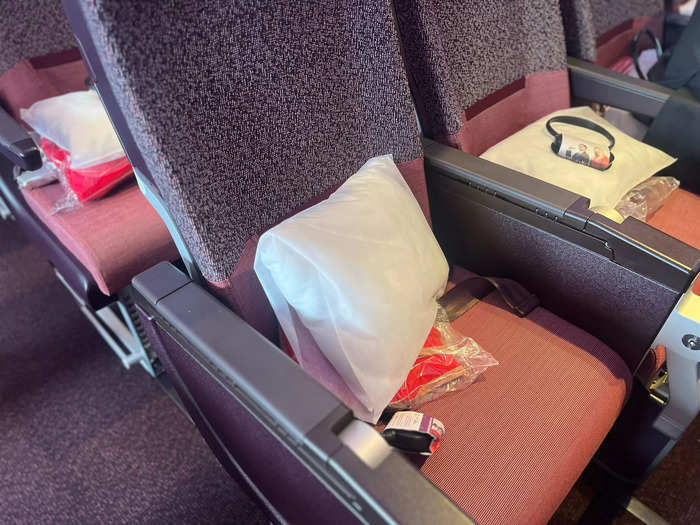
Economy sports the same-sized television (which Virgin says is its "biggest yet") as the premium economy cabin and allows customers to connect their personal headphones to the inflight entertainment. A mobile phone can also be connected as a remote.
Customers also have power ports, soft linens, an adjustable headrest, and standard meals. The food on BI's Virgin A350 economy flight in July was great, and the seats were well-padded.
Like the A350, the A330neo's seatback pocket carried over the two smaller pockets attached for better organization and storage.
The cabin-wide pink lighting is staple Virgin.
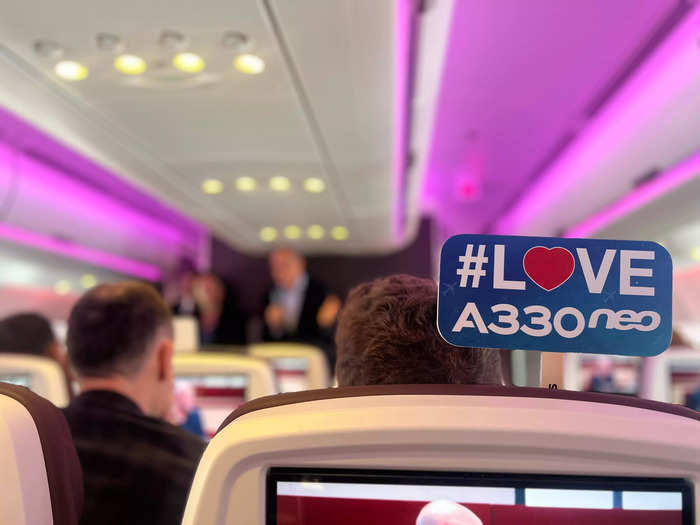
The A330neo gleamed with pink, complementing the red and purple-hued seats throughout the cabin.
It was all very elegant.
Virgin's A330neo is a welcome upgrade, especially for premium travelers.
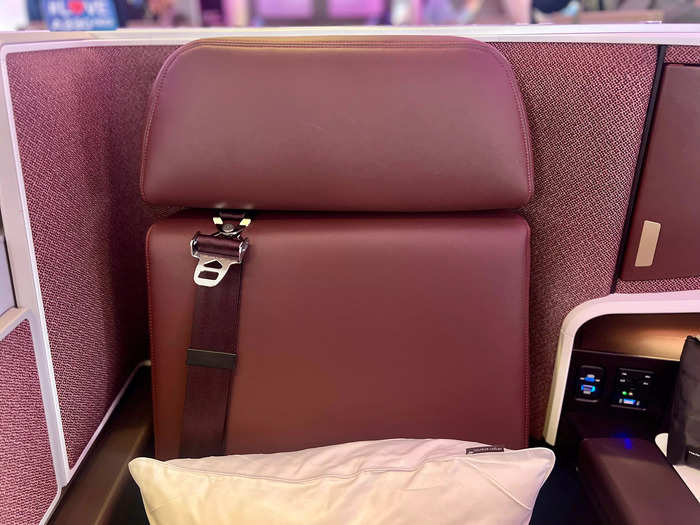
Virgin's A330neo had intentional luxuries in each of its cabins, from the doors and Retreat Suite in the new Upper Class to the Bluetooth-enabled seatback screens that even economy passengers can enjoy. The "Loft" is a nice touch that competing airlines like British Airways and Delta don't offer.
However, the main shortfall is in premium economy, which doesn't really have much upsell value from coach. It has the same Bluetooth-enabled 13.3-inch seatback screen, and its seat width is only six inches wider than regular economy.
Still, the cabin has plush and comfortable seats. Customers who want a little more space and privacy, better meals and amenities, and more convenience at the airport may consider upgrading.
But for those with money to burn or are savvy enough with points, Virgin's A330neo Upper Class is something to look forward to.
Virgin customers can experience the A330neo on more than a dozen routes.
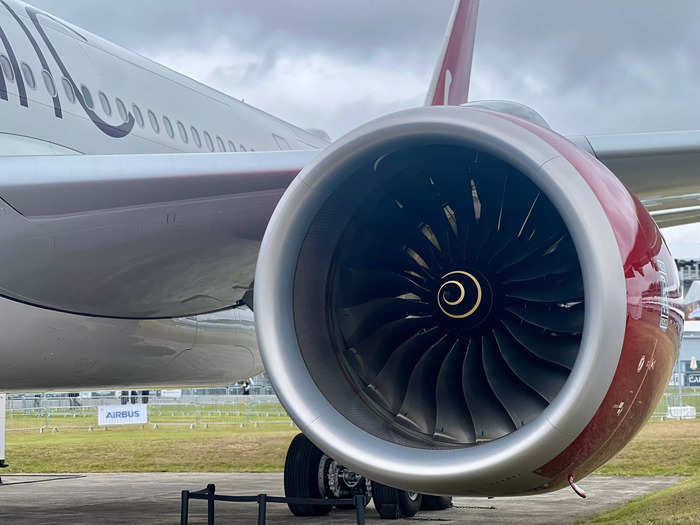
Cirium data shows Virgin flies its newest Airbus widebody plane between England and cities across North America, Europe, the Caribbean, Africa, and the Middle East.
In the US, the plane touches Orlando, Miami, New York, Boston, Atlanta, Tampa, and Washington DC.
Popular Right Now
Advertisement